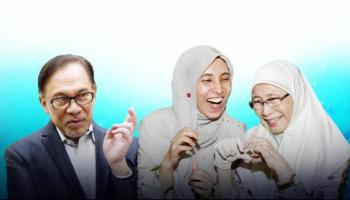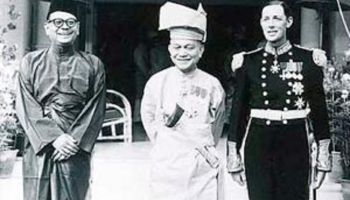

https://youtu.be/1F2l-BKDXGA
As Malaysia tackles a RM1 trillion national debt, it may be wise for Lim Guan Eng to focus on revitalising the economy than to whip up a confrontation with his own community over a RM30mil grant
The government will provide a mere RM5.5mil as development fund to TAR UC. The fuming Chinese community is now taking up the issue as TAR UC, along with Universiti Tunku Abdul Rahman (UTAR), another institution of higher learning linked to MCA, has provided affordable education to many Chinese students over the past 50 years.
The removal of the matching grant to TAR UC – an annual amount given by the Barisan Nasional government to the university college previously to match the funds it raised – will negatively impact its continued survival.
Hence, emotive comments against Lim have been dominating the vernacular media since the grant issue emerged.
A petition against the Finance Ministry has also been launched.
Notably, though they are two non-profit institutions set up by MCA – TAR UC in 1969 and UTAR in 2001 – they are now seen as part and parcel of the Chinese community, which has been supporting their operation and expansion with billions in cash donations and land.
The late philanthropist of Penang, Tan Sri Loh Boon Siew, told me in an interview in 1991 that he had contributed land and cash to TAR UC. Other Chinese tycoons, too, have privately shared such information with me.
Together with the matching grants from the government totalling RM1.353bil over the last 50 years, MCA was able to expand the reach of the university college, from Setapak to Penang, Sabah and Pahang.
In the last 17 years, MCA also built UTAR campuses in Sungai Long (Selangor) and Kampar (Perak).
In the five decades since TAR UC started, children from poor Chinese families and other ethnic groups, regardless of political leanings, have benefitted from the education offered by it due to its affordable fees.
In fact, TAR UC and UTAR are two of MCA’s best non-political projects which have contributed tremendously to the Chinese society, to compensate for its past failure to safeguard Chinese rights in the Umno-dominated Barisan regime.
Putting into historical context, TAR UC – which started as TAR College before being upgraded to university college status in 2013 – was a product of political compromise when non-bumiputra student intake into the five public universities then was limited by the introduction of the bumiputra quota. The one-to-one matching grant enabled TAR UC to provide an avenue for higher education for those from the lower-income group as well as performing students denied entry into public universities by the quota system.
Hence on Sept 15, 1972, Datuk Hussein Onn, the then-Education Minister, handed over the Instrument of Government to the institution.
A 77ha plot in Setapak was allocated for the construction of TAR College’s main campus.
Later, UTAR was set up and officially launched on Aug 13, 2002, by then Prime Minister Datuk Seri Dr Mahathir Mohamad after higher education in the private sector was liberalised.
According to MCA president Datuk Seri Dr Wee Ka Siong, some 200,000 students have graduated from TAR UC/UTAR over the past 50 years.
Currently, the student population in the two institutions totals 28,000. Employees stand at 1,500 (60% Chinese, 40% non-Chinese).
These figures show that not just the Chinese have benefitted from the existence of UTAR and TAR UC but the Malays and Indians as well. Among the Pakatan Harapan leaders who were beneficiaries of the TAR affordable education are Cabinet ministers Teresa Kok, Datuk Salahuddin Ayub and Datuk Seri Saifuddin Nasution Ismail as well as Penang Chief Minister Chow Kon Yeow and exco member Chong Eng.
As these two institutions have become integral to the Chinese community, it is natural that vernacular newspapers are following closely the developments in this issue.
From the writing in the Chinese media, it can be seen that this issue is threatening to become a “Chinese community vs LGE/DAP” confrontation. This may not augur well for Lim.
While there are people who agree with Lim’s argument to separate education from politics, and that MCA must cut its links with these institutions, they form a miserable minority.
In a strongly worded comment piece “Play-killing UTAR”, Sin Chew Daily deputy editor-in-chief Tay Tian Yan points out that in speaking up on the grant issue, it is not meant to support MCA, but to show concern for the future generations of the Chinese community, particularly those from the poorer classes.
In response to Lim’s warning to MCA that the two institutions cannot raise tuition fees, Tay concludes: “UTAR will die an eventual death if it cannot raise fees and is not given a grant. What will be the future of our Chinese youth?”
Generally, Lim is seen as abusing his power to punish his political rivals and in the process undermine the interest of his very own community. Such political gimmicks should be stopped when dealing with taxpayers’ money, given that 80% of the country’s revenue is contributed by Chinese businesses and individuals in the form of taxes.
For many people, it is particularly repugnant when Lim threatened to “take action” against MCA if the institutions raise tuition fees.
In a China Press editorial yesterday, Lim was reminded that last year when he was Penang Chief Minister, he had said education allocations to schools should be given regardless of political backgrounds. And he acted fairly.
“But after LGE became Finance Minister, his statement last year on equality dissipated. Shouldn’t the former Penang CM give a big scolding to the current Finance Minister?” asks the writer mockingly.
The Pakatan government has also been reminded that 95% of Chinese voted them in to oust the previous administration in the May 9 general election. Their support should not be taken for granted and forgotten.
In short, TAR UC and UTAR should not be penalised just because of their parental link with MCA.
Looking at national development, these two institutions have nurtured much talent to serve the country, particularly in the field of accountancy.
 |
File photo of UTAR's Faculty of Business and Finance in Kampar, Perak.
|
For this reason, and for their affordable fees, my husband and I sent our daughter to study in UTAR. She graduated last June.
As the country is confronted with a slowing economy and has to tackle a national debt of over RM1 trillion, it may be wiser for Lim to focus on revitalising the economy and other bigger national issues than to whip up a confrontation with his own community over a RM30mil grant.
By Ho Wah Foon, The Star
Related post:
https://youtu.be/AiIUc3spw-Y Varsity
grads: Chew says he is disappointed with Lim for removing the matching
grants when some lead..
Related:
Related:


















